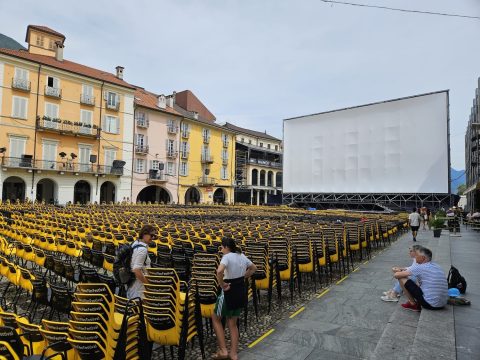The day I arrive in Locarno isn’t easy.
I awake in Devon, faintly reeling from a family wedding. Ahead of me: Portsmouth, London, Milan. 18 hours later — taxi, train, car, train, flight, train — I stumble into Rio Muralto, safely canopied among the Swiss Alps. I take to bed, imagining rest and relaxation, only to nurse a two-day hangover into the following morning, when I potter into town to pick up my accreditation. I notice I’ve had too much fun, and that some films might do me good.
I start by expecting something familiar. But after last year’s picaresque Do Not Expect Too Much From the End of the World (2023), Radu Jude returns with two novel experiments, Eight Postcards From Utopia (2024) and Sleep #2 (2024), both of which just exceed the hour mark, and which differ vastly in sensibility and scope.
The former film (co-directed with the philosopher Christian Ferencz-Flatz, below) is an elaborate montage of Romanian TV adverts crisscrossing three decades since the fall of Ceausescu. These promos have been collected into eight loose thematic sections, constituting an ironic critique of incipient state privatisation and corporate embrace: the thrilling dawn of market reforms, equity and investment, consumption as virtue.
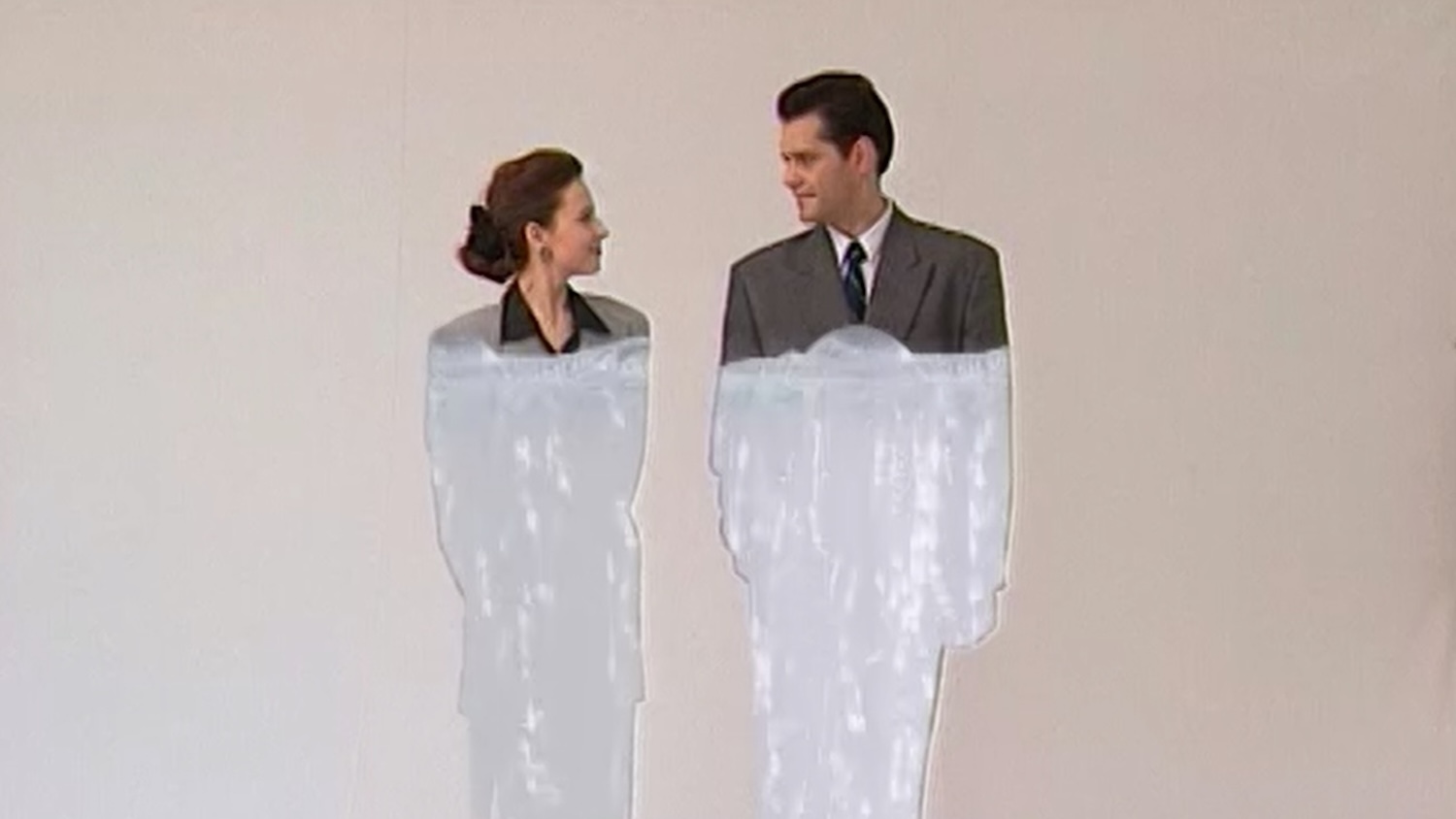
Clips for washing detergents, fizzy drinks and share purchases appear abridged and juxtaposed, generating a cavalcade of sounds and images, some of which are reprised, eliciting an increasingly saturated state of delirium.
One opening commercial depicts the ex-Chelsea footballer Adrian Mutu in gladiatorial costume, solemnly imploring us to “join the game.” As Mutu unlatches a colossal Pepsi crate with the swing of his right foot, his entreaty reveals the wider absurdities of post-Eastern bloc capitalism, which asks us to take part, have fun and, most importantly, do as others do. Jude extensively catalogues these wry amusements, provoking that uncanny feeling of watching old VHS recordings, the fast-forwarding of fragments from another time.
While Eight Postcards amounts to a frenetic roadshow compilation of recent cultural history, Sleep #2 (below) supplies a more meditative appraisal of contemporary social habits. Termed a “desktop film” by Jude, it gathers and sequences blocky webcam footage of Andy Warhol’s grave, located in Pittsburgh, Pennsylvania. The final piece (edited into vague chronology by Cǎtǎlin Cristuțiu) functions as a cheeky, unsanctioned sequel to Warhol’s debut Sleep (1964), which surveyed the slumber of his lover John Giorno for 5 hours and 21 minutes. Here, we absorb a single year of the EarthCam video feed, cut and spliced to show Warhol’s memorial through the shifting seasons, the encroaching wildlife, the tended flowers, the arranged soup cans, and the dovetailing of day and night.
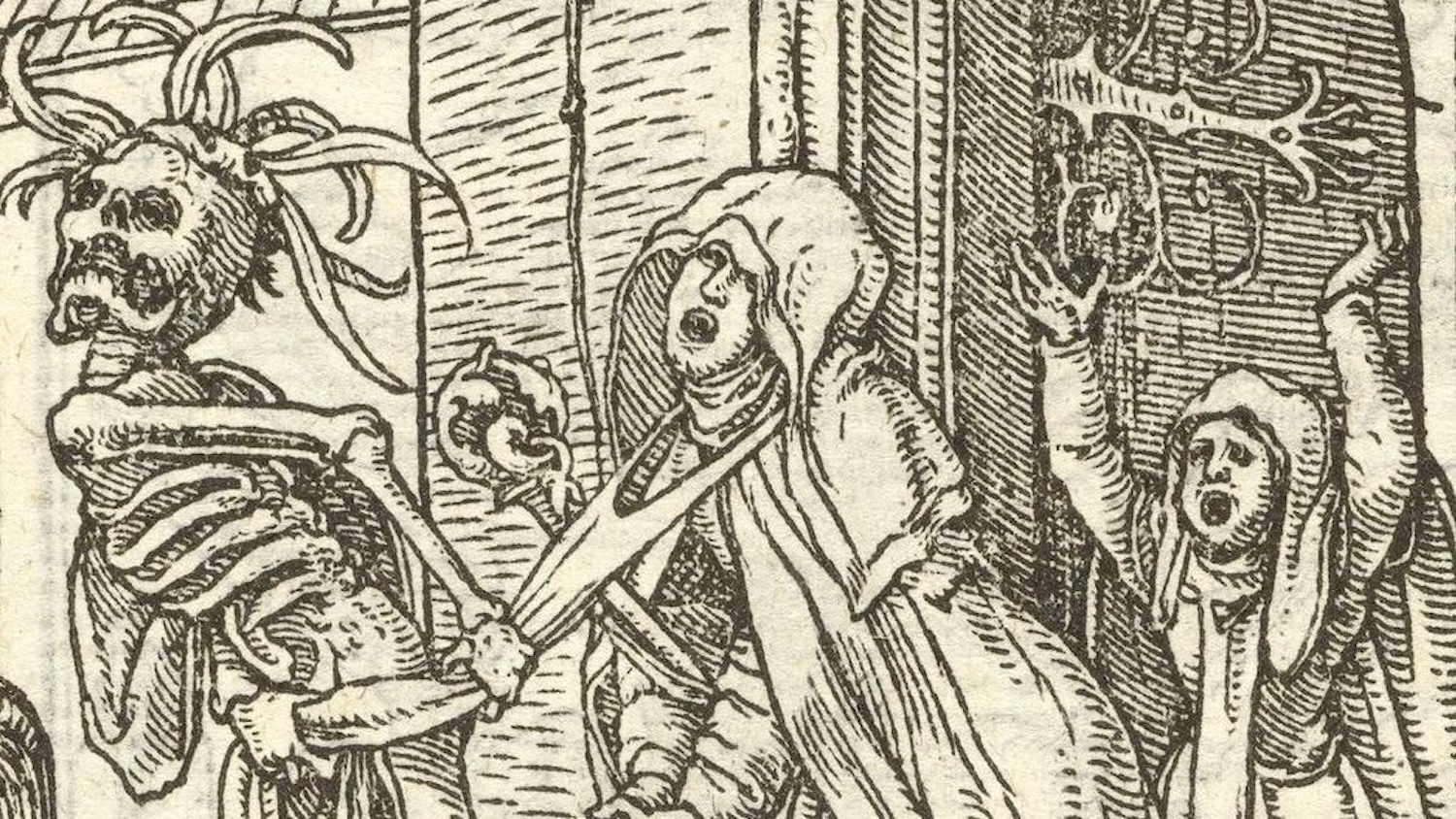
These multiple layers of observation and mediation are essential to the film’s thesis. Many cemetery visitors demonstrate awareness of their constant surveillance: interlopers are caught waving at the camera, giving thumbs-up to bystanders, and on one impish occasion, mooning in front of the tombstone.
As Warhol’s epigraph states at the beginning: “The most wonderful thing about living is to be dead.” Detectable in that aphorism is a paradoxical truth: that monuments provide vital sites of reverence and revelry, and that the legacies of death, cultivated through whichever means, extend lifetimes. The mostly static focus on the lone setting provides a startling counterpart to the dissonant ad-break parade, and Jude’s authorial judgement is leavened with greater pathos, as his insistent satirical pokery gives way to the accumulative power of the landscape.

The Vicissitudes of Youth
While Jude’s vanguard entries screened out of competition, the Pardo d’Oro (Golden Leopard) was awarded to the Lithuanian filmmaker Saulė Bliuvaitė. Her debut feature Toxic (above) examines two 13-year-olds (Vesta Matulytė and Ieva Rupeikaitė) navigating the tribulations of inchoate modelling careers in a desolate industrial enclave.
For the most part, this is frank, nasty and admirable fare: teenagers scrap with one another, unattended girls risk sexual exploitation, and in one wincing moment, a budding recruit imbibes a tapeworm to fend off the marginal signs of weight gain. The structures and expectations of femininity are clearly pronounced: slim waistlines must be slimmer, natural beauty engenders general contempt, and money — these young women are commercial products, after all — spins the wheels in the end. Shared alienation is evoked through vertiginous angles in the domestic scenes, where ceilings dominate the frame, reinforcing the confines from which the tyros dream of escape.
The vicissitudes of growing up are handily brought into focus by the second in Wang Bing’s epic 2024 trilogy, Youth (Hard Times) (below), which documents Chinese migrant workers in the country’s provincial and casualised textile industry. Following Youth (Spring) and preceding Youth (Homecoming), soon to premiere in Venice, this almost four-hour instalment tracks multiple sweatshops in Zhili, a town in the Wuxing District of Huzhou.
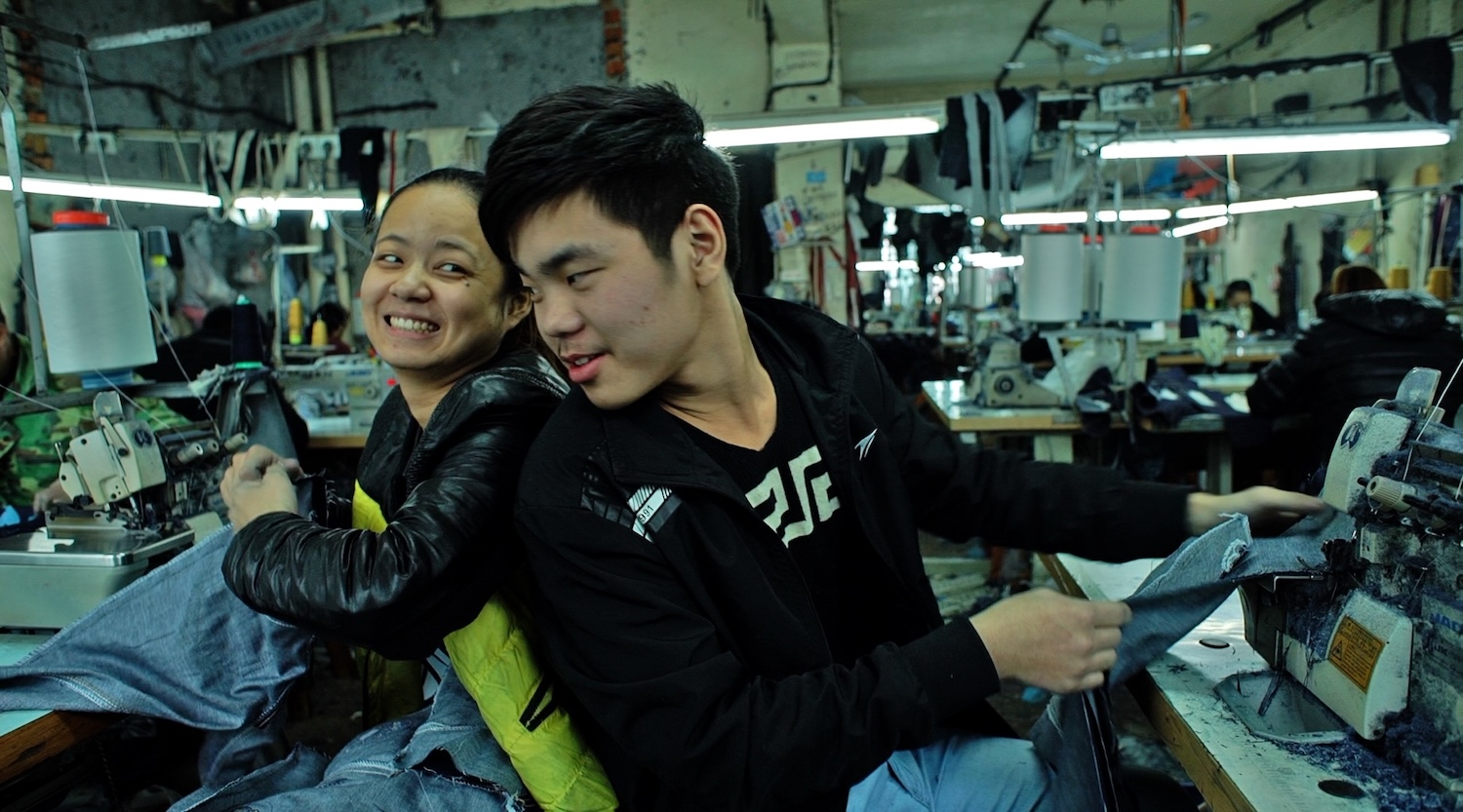
What immediately strikes the viewer is the sonic supremacy of the sewing machine: the motorised hum, the percussive needle punch, the torn thread. The bluntly cacophonous workstations, rooted amid oceans of discarded fabric, repeat themselves throughout Happiness Road, a coyly labelled strip for garment manufacturing and a winking metonym for wider deregulation of the sector. In the wake of flighty business owners and unscrupulous landlords, the workers deploy ad hoc methods of political organisation to obtain basic pay and conditions: they supply exact arithmetic for finished items, build fragile coalitions among disparate cliques and prepare bargaining positions to take on their bosses.
While teasing out the forlorn and thwarted possibilities of collective, cooperative enterprise, Wang provides painstaking identification of his individual subjects. Captions that reveal names, ages and home provinces frequently pockmark the screen. This simple motif underlines a basic attention to the participants, illustrating the thoroughness and specificity that imbues Wang’s filmic endeavour.
His longitudinal, embedded approach notices the texture of tiny actions: the fleeting tempers; the flirting camaraderie; the stretched clothes hanger across the knee; the scraped key on the aluminium surface. From 2014 to 2019, Wang piloted his handheld camera to service these films and the lives they portray. He and his crew bustled through countless doorways, stairwells, streets and alleyways, situating themselves among a teeming labour force of teenagers and twentysomethings. So far, it constitutes a remarkable achievement.

Hong Goes Long
By comparison, Hong Sangsoo works on smaller timelines and at shorter lengths, although his latest film uncharacteristically creeps towards the two-hour point. This slight temporal expansion suggests an additional narrative and dramatic depth, at least among Hong’s recent prolific output, and I found that By the Stream (2023) delivers a rare emotional wallop.
It follows the established quotidian premise: a semi-disgraced playwright (Kwon Hae-hyo) leaves Kangwon Province and arrives in Seoul to meet his estranged niece (Kim Min-hee), a teacher inviting him to write and direct a skit for her students at short notice. Respecting Hong’s regular nod to sexual politics, the previous tutor had been sacked for conducting inappropriate relationships with three of his pupils.
Hong includes his other standard sites of orientation: gorgeous, naturalistic performances; boozy, candid dinner scenes; pregnant, withheld plot escalations. This effort stands apart for its captivating climax. Hong’s pointed inflection of the zoom spotlights four girls from the drama troupe as they discuss their hopes and fears for the future. The sequence’s harsh simplicity commands an adamant sympathy, in the way it portrays the common uncertainty about what lies ahead.
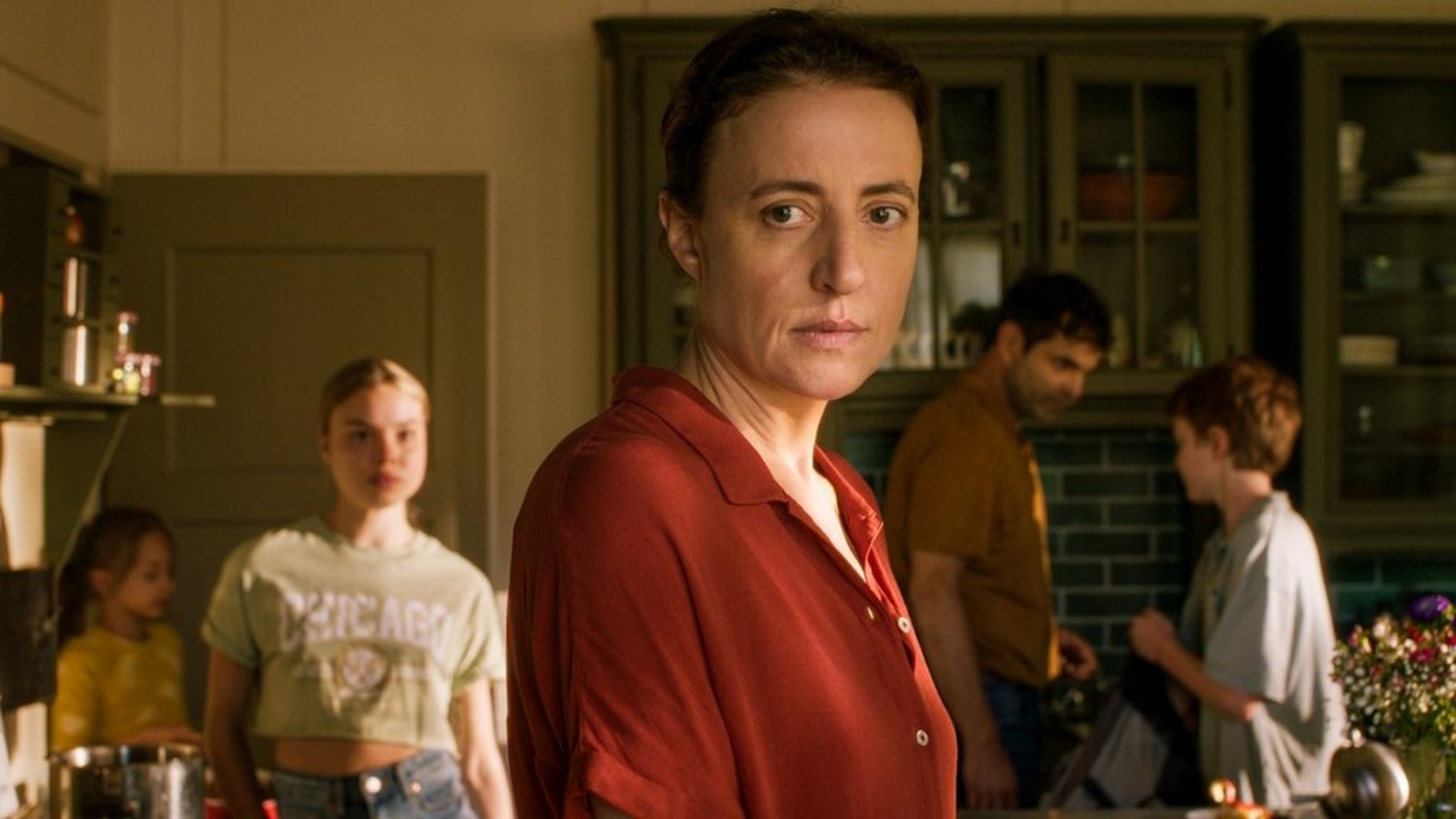
The End of the World
Foresight, in contrast, is a gift and a curse in Ramon Zürcher’s newest household theatrical, The Sparrow in the Chimney (2024), which leans heavily into creaturely symbolism — sparrows, yes, but also cats, chickens, cormorants. The drama enacts a whirlwind of cause and effect, held together by fastidious framing, off-screen inference and relentless point-of-view shifts.
At its centre is the family matriarch (Maren Eggert), who not only observes the transparent follies and deceptions of her loved ones but presciently eyes the fundamental mythic terror that awaits us all: the end of the world. Eggert is a nicely formidable and unlikeable presence, anchoring an ensemble that ducks and dives around her, alternately concealing and revealing their private hardships and desires.
(Ramon still works with his brother Silvan, but the latter — co-director of The Strange Little Cat (2013) and The Girl and the Spider (2021) — is now on producing duties.)
This film demonstrates the Zürchers’ usual aesthetic preoccupations, depicting in sudden fluidity the social ruptures that transform the still and tranquil image, the unspoiled middle-class existence always underpinned by violence and discontent. Yet its final act detonates in several directions, and the preceding formal rigour loosens for something else altogether. Something unexpected, something fun.
Joseph Owen, occasional film critic, is a research fellow at the University of Southampton.
